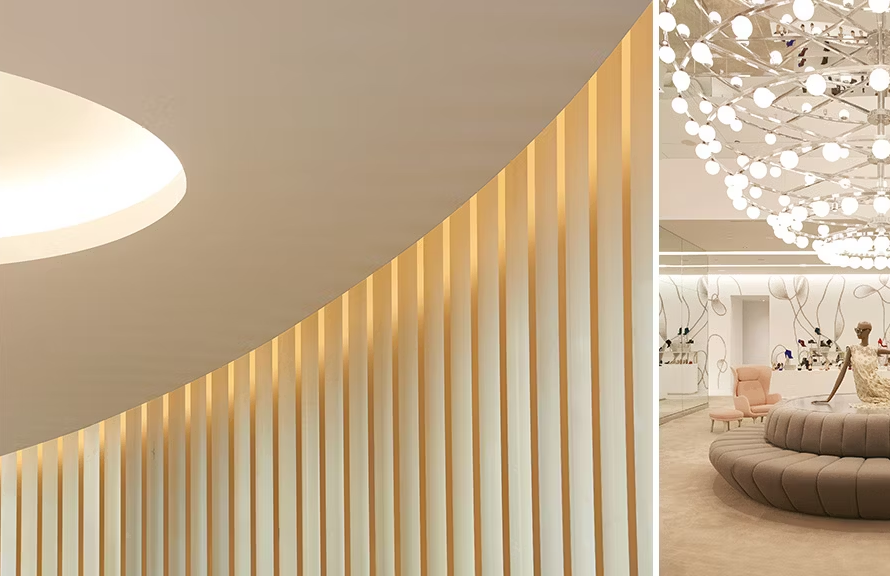
Table of Contents
In the dynamic realms of design and visualization, two distinct yet intricately connected professions stand out: the architect and the 3D artist. Each role carries its unique set of responsibilities, skills, and creative avenues, shaping tangible and virtual worlds in profound ways. Delving into their differences illuminates the diverse paths of creation and innovation they tread.
1. Core Focus: Crafting Realities, Digital and Physical
At the heart of architecture lies the art and science of designing functional, aesthetic, and safe built environments. Architects blend artistic vision with technical precision, considering spatial relationships, materials, sustainability, and regulatory requirements. They envision and create structures that not only serve practical purposes but also inspire and harmonize with their surroundings.
Conversely, 3D artists are maestros of digital creation, crafting immersive experiences, and visual narratives within virtual spaces. Their canvas extends beyond physical constraints, allowing for boundless creativity in shaping characters, environments, and stories. They breathe life into digital realms, captivating audiences through interactive experiences, animations, and visual simulations.
2. Skill Sets: Merging Artistry and Technology in both Architect and 3D Artist
Architects wield a diverse skill set encompassing architectural drafting, building systems, structural analysis, project management, and client communication. Proficiency in software like AutoCAD, Revit, and SketchUp facilitates design development, construction documentation, and collaboration with multidisciplinary teams.
In contrast, 3D artists master digital tools for 3D modeling, texturing, lighting, rendering, and animation. Their expertise in software such as Blender, Maya, and ZBrush enables them to create photorealistic or stylized visuals, immersive environments, and dynamic animations. Artistic sensibility, attention to detail, and creativity define their craft, shaping virtual experiences across industries.
3. Output: From Blueprints to Virtual Realities
Architects translate design concepts into tangible outputs like architectural drawings, blueprints, physical models, and construction documents. These artifacts serve as guides for builders, regulators, and clients, ensuring that design intent aligns with functional requirements, safety standards, and budget constraints.
Conversely, 3D artists produce digital artworks, animations, virtual environments, and interactive experiences. Their creations transport viewers into imaginative realms, showcasing products, concepts, or narratives with visual impact and emotional resonance. From immersive games and cinematic sequences to architectural visualizations and product simulations, their outputs span diverse industries and mediums.
4. Workflow Dynamics: Sequential vs. Iterative Creation
Architects follow a structured workflow encompassing conceptual design, schematic design, design development, documentation, and construction phases. Each stage builds upon the previous, incorporating feedback, regulations, and technical considerations to refine and realize architectural visions efficiently.
In contrast, 3D artists navigate an iterative creative process involving concept ideation, 3D modeling, texturing, lighting, rendering, and post-production. Collaboration with peers, clients, and stakeholders fuels iterative refinement, ensuring that visual narratives, animations, or virtual experiences meet project goals and audience expectations.
5. Purposeful Design: Functionality and Emotion
Architects prioritize functionality, safety, sustainability, and aesthetics in their designs, balancing practical needs with visual appeal. Their creations shape urban landscapes, living spaces, and cultural landmarks, influencing daily experiences and societal interactions within built environments.
Conversely, 3D artists focus on storytelling, emotion, and user experience within digital realms. Whether crafting compelling characters, immersive game worlds, or cinematic sequences, their goal is to evoke emotions, convey narratives, and engage audiences on profound levels. From entertainment to education and marketing, their creations leave lasting impressions and drive engagement.
6. Industry Impact: Shaping Realities, Digital and Physical
Architects play pivotal roles in the architecture, engineering, and construction (AEC) industry, contributing to urban planning, sustainable design practices, and innovative building technologies. Their work impacts communities, economies, and environmental sustainability, reflecting cultural values and technological advancements.
Similarly, 3D artists influence diverse industries such as entertainment, advertising, education, and architecture through digital innovation and visual storytelling. Their contributions enhance gaming experiences, marketing campaigns, educational simulations, and architectural visualizations, pushing boundaries of creativity and technology.
7. Collaborative Dynamics: Teamwork in Creation
Architects collaborate with engineers, interior designers, contractors, and clients to ensure holistic design solutions that meet functional, regulatory, and aesthetic requirements. Effective communication, interdisciplinary collaboration, and project management skills are paramount for successful project outcomes.
Likewise, 3D artists collaborate with art directors, animators, developers, and clients in multidisciplinary teams to realize creative visions. Clear communication, creative synergy, and iterative feedback loops drive collaborative efforts, resulting in visually stunning animations, immersive experiences, or interactive designs that resonate with audiences.
8. Educational Pathways: Nurturing Talent and Expertise
The educational journey for architects typically involves obtaining a professional degree in architecture, followed by licensure exams and ongoing professional development. Specializations in areas like sustainable design, historic preservation, or urban planning deepen expertise and open doors to diverse career opportunities.
In contrast, 3D artists pursue degrees or certifications in digital arts, animation, game design, or related fields, honing skills in digital modeling, animation, rendering, and visual storytelling. Continuous learning, portfolio development, and networking within creative communities are crucial for career advancement and specialization in niche areas of digital artistry.
9. Client Interactions: Vision Realization and Iterative Feedback
Architects engage in extensive client consultations, presenting design concepts, iterating based on feedback, and creating detailed proposals and presentations to communicate design intent effectively. Collaboration with clients, stakeholders, and regulatory bodies ensures alignment with project goals and expectations.
Similarly, 3D artists collaborate closely with clients, interpreting briefs, storyboards, and mood boards to align visual narratives with brand identity, target audience preferences, and project objectives. Iterative feedback loops, visual prototypes, and mockups facilitate communication and refinement, leading to successful project outcomes and client satisfaction.
10. Impact and Legacy: Shaping Environments and Imaginations


Architects leave lasting legacies through built environments that shape cities, communities, and cultural identities. Their contributions to sustainable design, historical preservation, and technological innovation influence architectural trends, urban planning strategies, and societal well-being.
Likewise, 3D artists leave digital footprints through immersive experiences, memorable characters, and visually captivating narratives that transcend boundaries of space and time. Their creations entertain, educate, and inspire audiences globally, shaping digital media landscapes, gaming cultures, and interactive storytelling formats.
In conclusion, while architects and 3D artists operate within distinct realms, their shared passion for creativity, innovation, and meaningful design bridges gaps and fosters collaboration across industries. Understanding their unique roles, skill sets, and contributions enriches our appreciation for the diverse avenues of creation, visualization, and storytelling that shape our world and imaginations.


